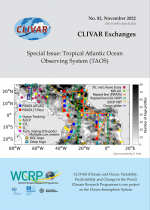Butterfly effect and a self-modulating El Niño response to global warming

The ‘butterfly effect’ is used by climate scientists to refer to an infinitesimal random perturbation to an identical initial condition (for example, in surface temperatures) causing drastically different trajectories. A recent study published in Nature (Cai et al. 2020 https://www.nature.com/articles/s41586-020-2641-x ) shows that under greenhouse warming the trajectories of El Niño response is organised by an El Niño self-modulation mechanism. When butterfly effect leads to higher initial variability, a greater cumulative equatorial Pacific oceanic heat loss reduces stratification of the upper equatorial Pacific Ocean, leading to a smaller increase in El Niño variability under greenhouse warming, and vice versa. In this way, El Niño stores a memory of its past behaviour, and organises its future accordingly.
El Niño and La Niña are the opposite phase of the El Niño–Southern Oscillation (ENSO). In response to greenhouse warming, climate models project an increased frequency of strong El Niño and La Niña events, but the change differs vastly across models. The study shows that vastly different initial ENSO variability as a result of an infinitesimal random perturbation to identical initial conditions, like a butterfly effect, systematically affects its response to greenhouse warming a century later. In experiments with higher initial variability, a greater cumulative oceanic heat loss from ENSO thermal damping reduces stratification of the upper equatorial Pacific Ocean, leading to a smaller increase in ENSO variability under greenhouse warming. Thus, if the greenhouse-warming-induced increase in ENSO variability is initially suppressed by internal variability, future ENSO variability is likely to be enhanced, and vice versa.













